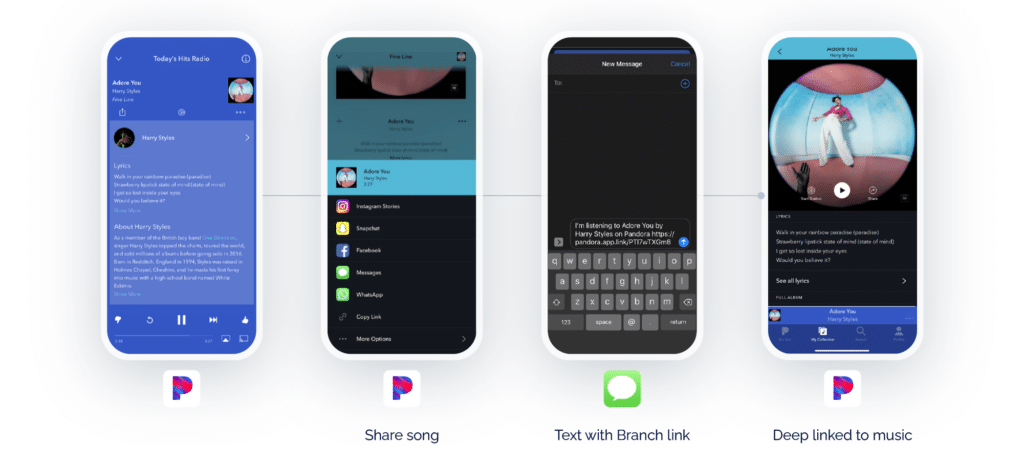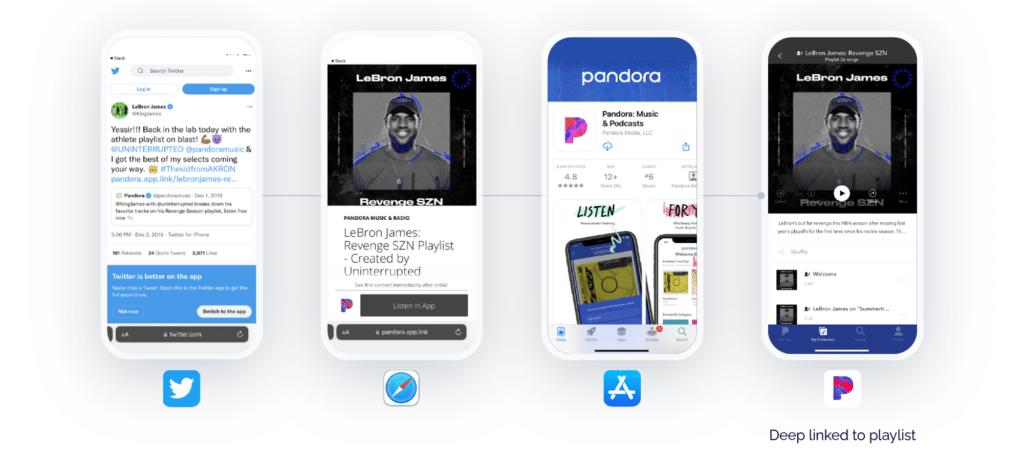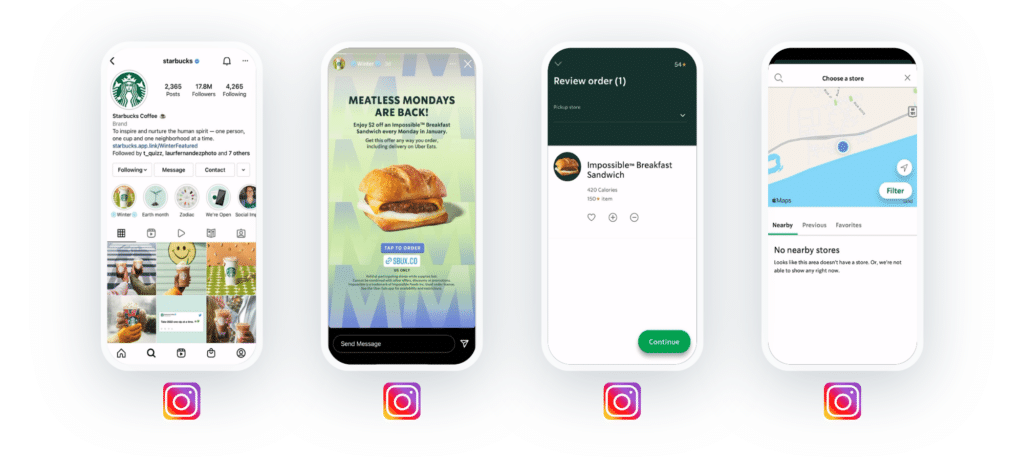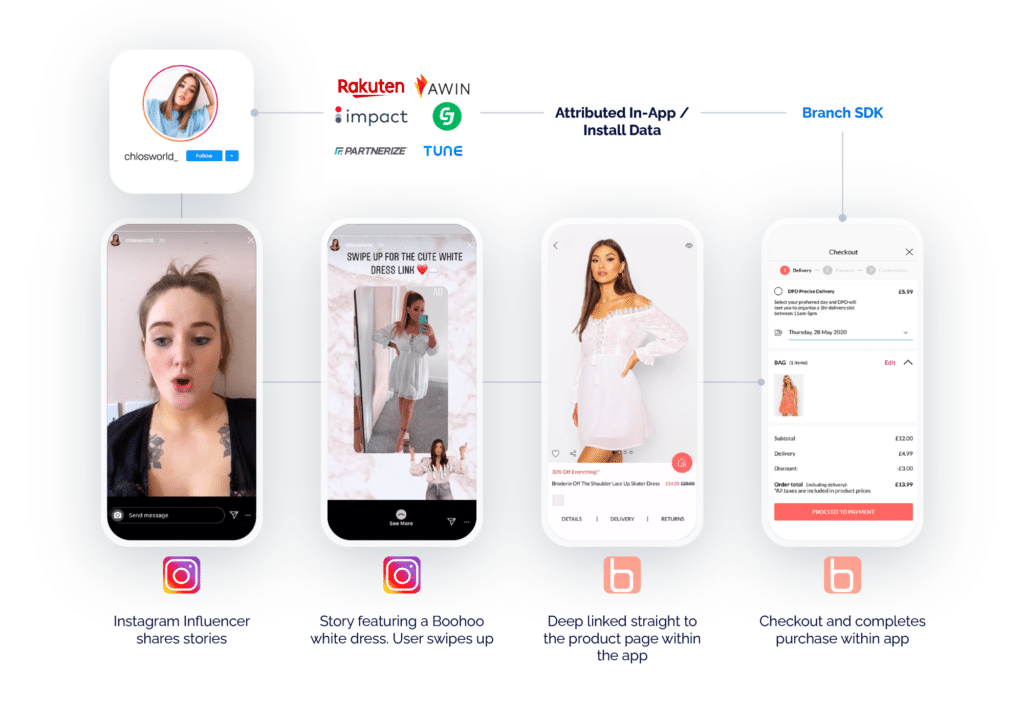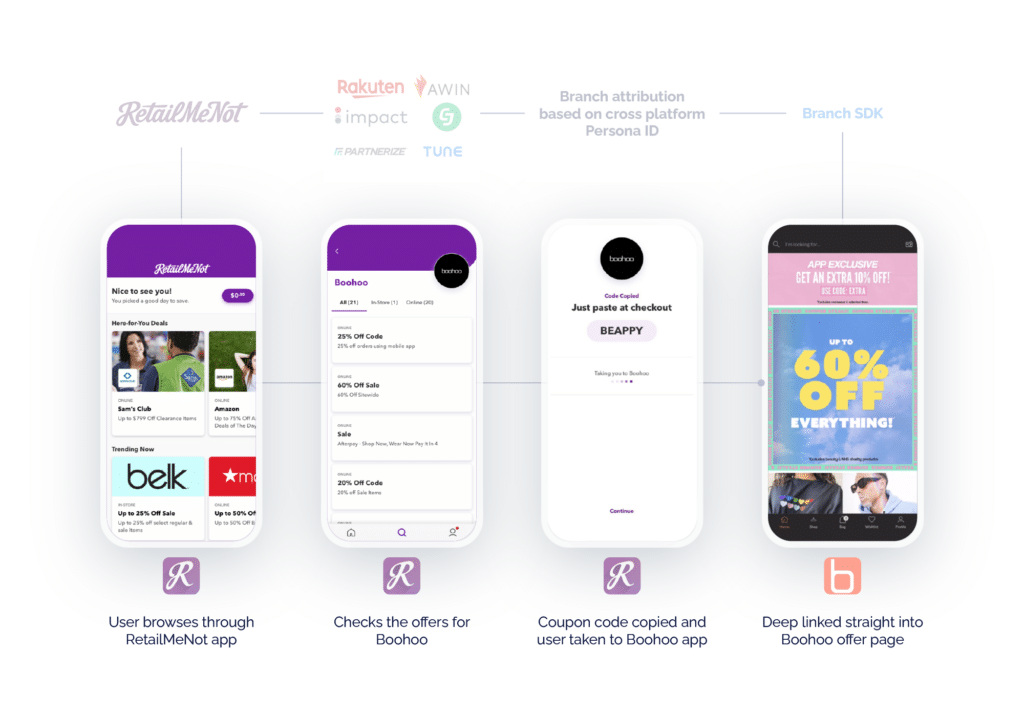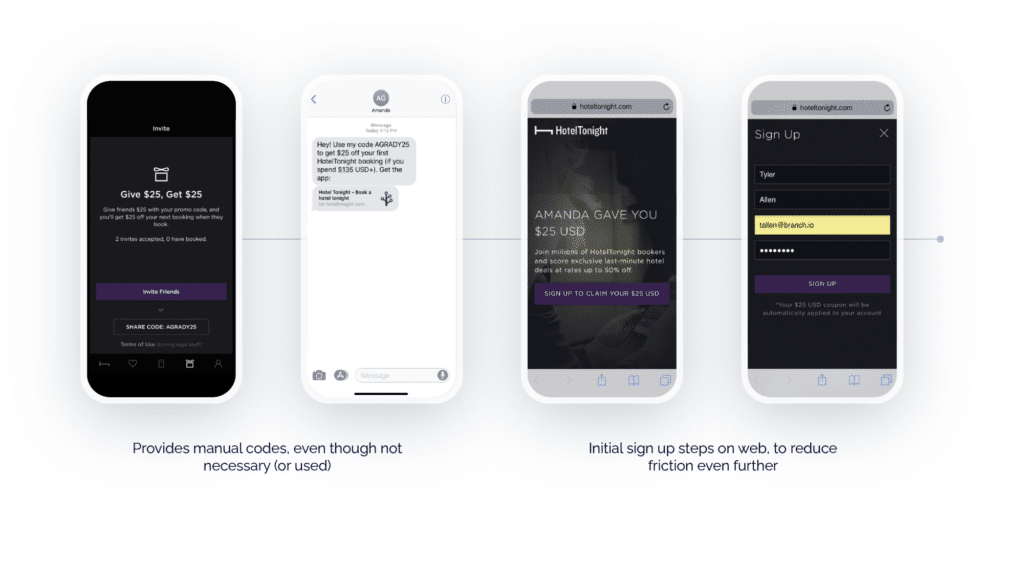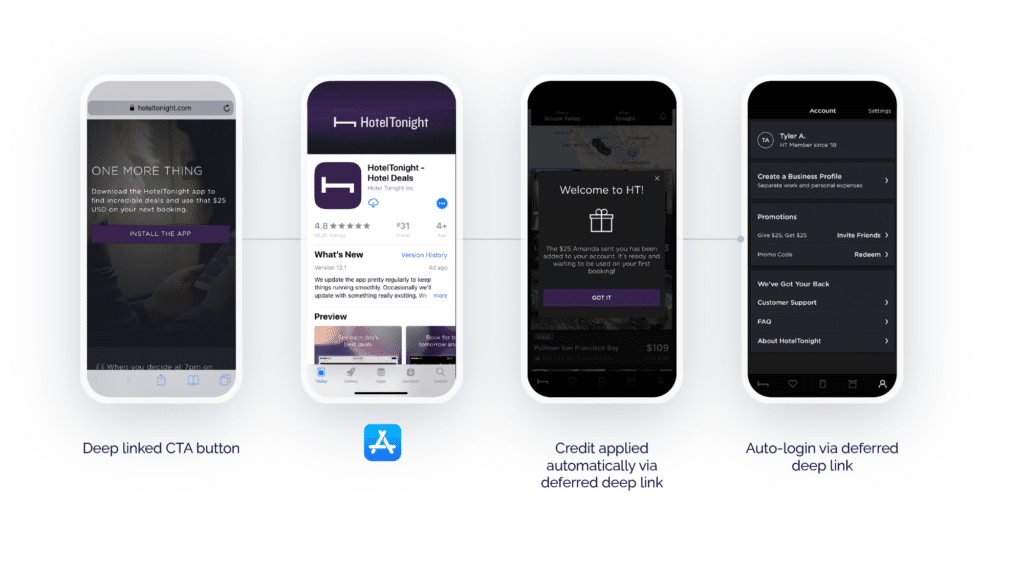You’ve probably run across a few different kinds of sharing links. The best example might be a popular music streaming service. Anyone with the app can share a link to a song or playlist across platforms — including a preview of the content itself — in one seamless action. But not every brand does this.
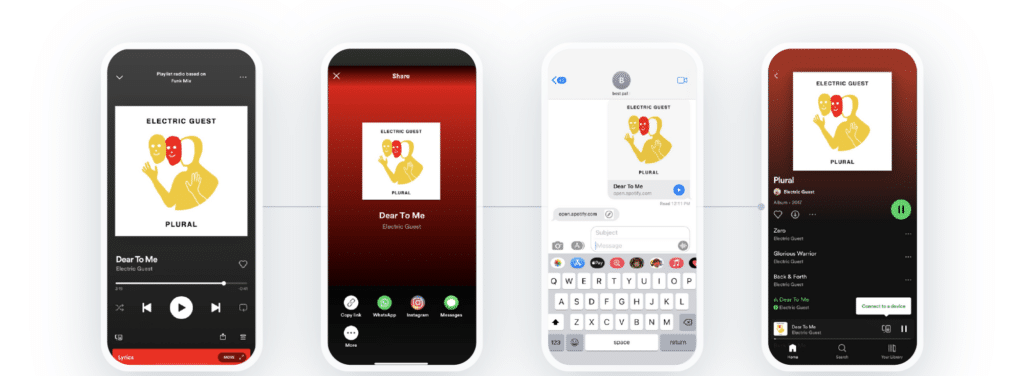
The world of mobile marketing strategy and app marketing is ever-evolving, and sharing links certainly can come with some challenges. But mobile experts agree that one of the best ways to help an app go viral is to utilize user-generated sharing links, so word of mouth can go even further.
User-generated content and sharing links
As social media use has skyrocketed, more and more brands are enjoying the benefits of user-generated content (UGC), which is content created by customers and brand advocates instead of the brand itself. UGC is often seen as more authentic and trustworthy. UGC is the first step in helping apps go viral, but sharing links are the next and vital step. User-generated sharing links help brands realize the full potential of viral growth by enabling users to share content easier and faster.
How apps go viral
No matter the business, sharing links drive app adoption, boost conversions, and enable app engagement. Link destinations could be song or video content, ecommerce sales or promotions, a specific landing pages, hotel booking, or even stock trade. Sharing links can occur in several ways:
One of the main challenges with most sharing links is that they go straight to the mobile web, or users get caught in walled gardens. Social networks like Facebook, TikTok, and LinkedIn are designed to keep you within a platform’s ecosystem as long as possible, so in many cases, there is no proper attribution; shares are simply attributed to organic web sessions rather than the app.
The best way to overcome these functionality challenges is to create deep links and attribute shared content. These shared links create informative Deepviews, which auto-open the app and take users directly to specific content deep within the platform. This ensures clicks and downstream events are attributable to that link and channel, so marketers have more accurate metrics for campaign optimization.
No matter what type of business, deep links are very flexible and can apply to a variety of use cases, including acquisition, retention, brand awareness, and virality. With Branch, the deep linking process is easy, one single link that can go anywhere across all channels. Let’s dig into each type of sharing and how brands can use deep links to grow their app.
Peer-to-peer sharing
The most common form of sharing links sends content to one or many peers, often via email or text message. This type of sharing enables a number of users to drive engagement via existing flows.
Unfortunately, standard links typically go straight to mobile web rather than the app. Even if the recipient has the app, they often have to click an additional button to open the app. But even then, they may not end up on the specific content they expected.
Adding customized Deepviews and deep links is vital for peer-to-peer sharing links. They enable users to share links with peers that take them directly to specific in-app content, and brands can attribute that share back to the app.
For example, Pandora uses a custom share sheet with personalized CTAs. It enables users to share links to music content with friends via multiple platforms, including text message, Instagram Stories, Snapchat, and more — regardless of if they are iOS or Android users. Thanks to a Branch deep link, recipients of the link are taken directly from the link to the very song that was shared.
Users can also share from one to many on social media, which is a powerful lever to grow the app user base in addition to engagement. When interesting shares are deep linked, other people see that activity on platforms like Facebook or Twitter, click on the link, and often register as first time users.
When LeBron James shared his Pandora playlist on Twitter, followers that clicked the link were taken seamlessly to the mobile web with a banner that took them to the app download page and then immediately to his playlist content within the app.
This is called a deferred deep link. It deep links new users to the app download screen in the Google Play or Apple App Store and then to the desired in-app content they had originally clicked. This offers an even more powerful user experience.
Social media sharing
Another familiar type of sharing happens via a brand’s organic social media. Many brands will simply post a link to their own social profiles, but very few use deep links. This means they’re not properly attributing downloads or engagement.
Linking from social is hard because walled gardens want to keep target audiences inside their social media platform rather than coming to an app. Branch deep links are designed to scale these walls and allow affiliates and influencers to link their content directly to the app, eliminating any missed opportunities for attribution or app downloads.
Brands can also use Branch deep links in their bios so they can attribute app installs back to a particular social media channel and then customize new user onboarding based on where users came from.
Starbucks offers an even more advanced example of sharing deep links. They enable users to add store products to their cart directly from Instagram, Twitter, email, or text message, making products just one or two clicks away from being purchased.
Here’s how the flow looks for Starbucks’ Instagram sharing link.
Affiliate and influencer marketing
Affiliates and influencers are individuals with large followings on social media that amplify a brand or product to a larger audience. They affect purchase decisions as well as drive traffic back to a product and increase app adoption. These partnerships are only effective if the brand can measure how many new app users or customers they acquired as a result of the partnership. To do that, brands need to use deep links so they can attribute new users to the influencer or affiliate.
“You could be deep linking directly to content or even activating promotions. Influencers, affiliates — those are huge right now for marketing, and they’re high ROI. Imagine what you could be doing if they were leveraging deep links for that content.” — Reed Kuhn, Branch’s Sr. Director of Business Strategy from the How User Generated Sharing Links Help Your App Go Viral webinar.
For example, a boohoo fashion influencer might post a photo of themselves wearing a dress on Instagram along with a link to the product within that content. Followers reading that post can swipe up and be taken directly to the in-app product page for that dress.
Cross-app affiliates can also be utilized by deep linking social influencers’ content or promotions to the app. For instance, boohoo provided a cross-linking experience with affiliate company RetailMeNot using Branch links. Users who clicked the boohoo coupon link in the RetailMeNot app were taken directly to the boohoo app to activate that offer.
Referrals
Referral links are often used by brands to reward existing users for bringing their friends into the app. Lesser-used deferred deep links can also be used to personalize new user onboarding. Deferred deep linked referral links and personalized onboarding play a key role in gaining new users.
One example of personalized onboarding comes from HotelTonight. Share codes are personalized to the current user, so that the user’s friends can easily see the code isn’t spam — it clearly integrates part of their friends’ name into the code. This personalization encourages new users to sign up.
When a friend clicks that link and signs up, they install the app and immediately see the personalized incentive confirmation in their app.
Best of all, building this into an app requires minimal engineering time. Branch links will store names, profile images, and other data associations, which brands can then retrieve from the Branch API. This allows easily created custom welcome screens and notifications.
Bottom line, implementing deep links in a referral program creates an incredible experience for new users engaging with the app.
How to tackle sharing links
The app world is constantly changing, but utilizing user-generated sharing links and employing deep links will help gain visibility into marketing campaign investments.
Sharing with Branch deep links:
- Gives users a smooth transition from web to mobile app
- Seamlessly attributes affiliates and influencers
- Allows for personalized onboarding from referrals
With all that working together, brands that use deep links are much closer to app virality.
To learn more, check out our webinar about user-generated sharing links.


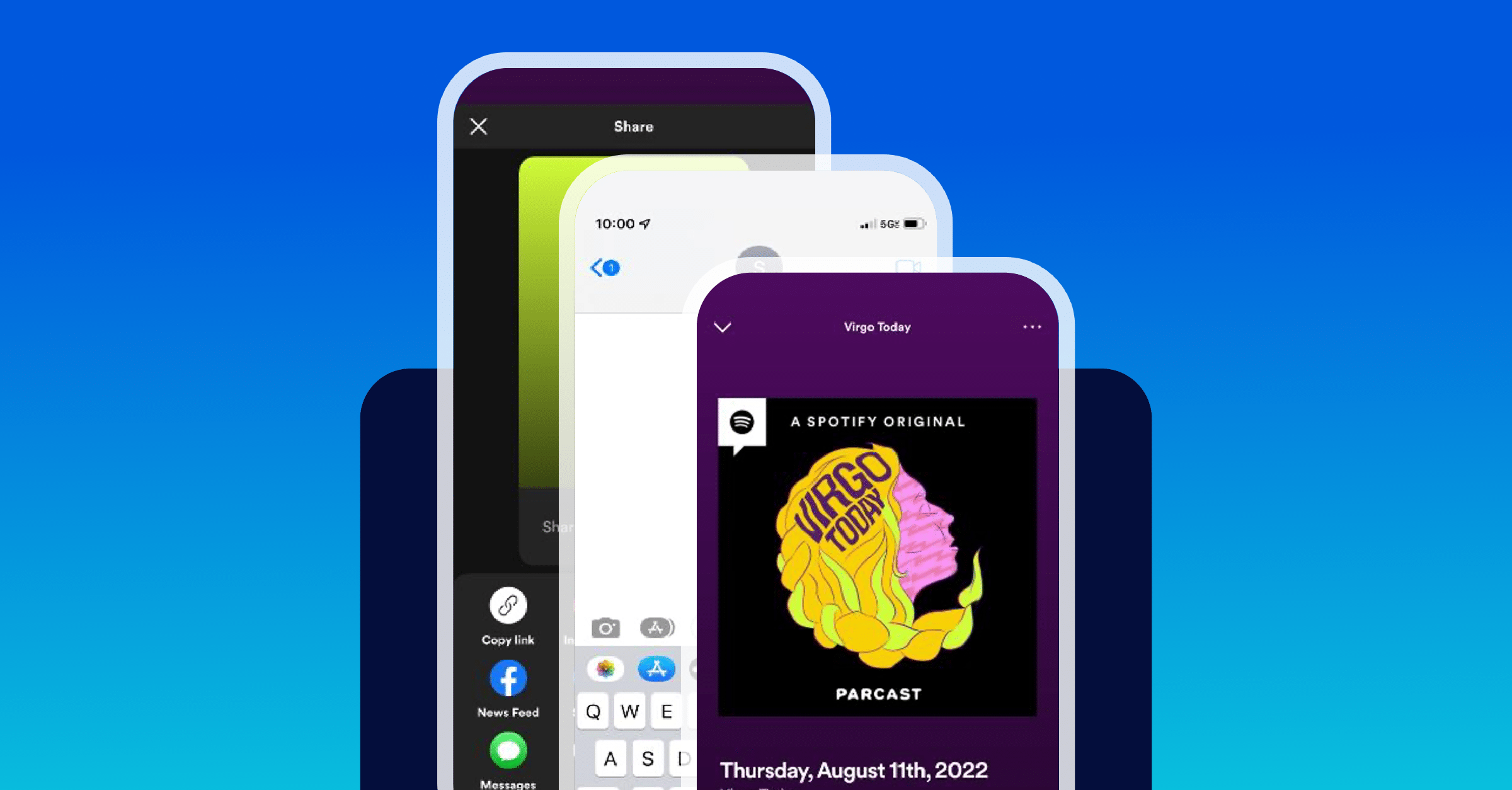
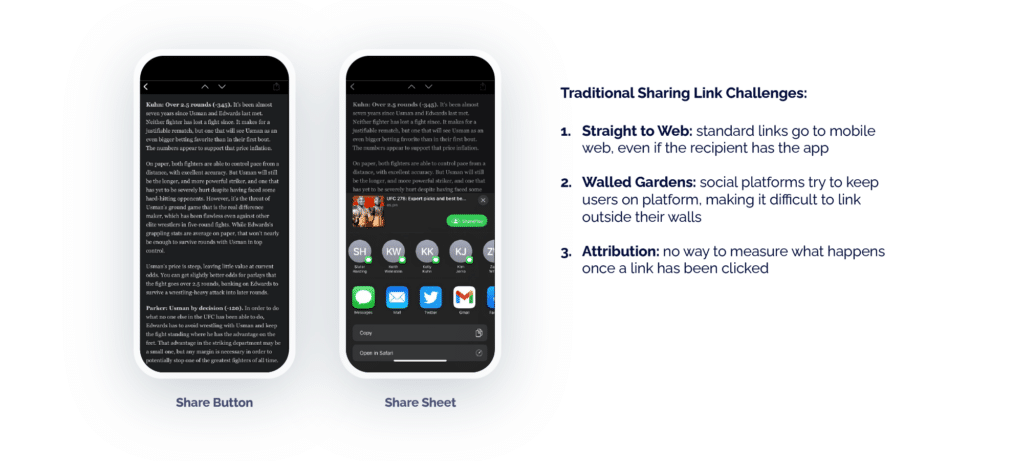
![Image showing how deep links help with sharing and attribution. Image 1: Customizable share sheet content, features, and receiving platforms. [image of Spotify app on smartphone] Share sheet switch Branch make content shareable, customizable, and traceable. Image 2: Deepviews are adaptable to give a preview of in-app content behind a Branch. [image of song album cover shown in iPhone messages when shared] Image 3: Branch link opens in-app content at exact timing shared from. [image in Spotify app of song playing at the exact time when the user clicked to share] Image 2 & 3: Deepviews link to original content from wherever it is shared.](https://www.branch.io/wp-content/uploads/2022/12/Q4_2022_blog_UG_links_webinar_recap_images_v1_3_The-sharing-playbook-1024x563.png)
